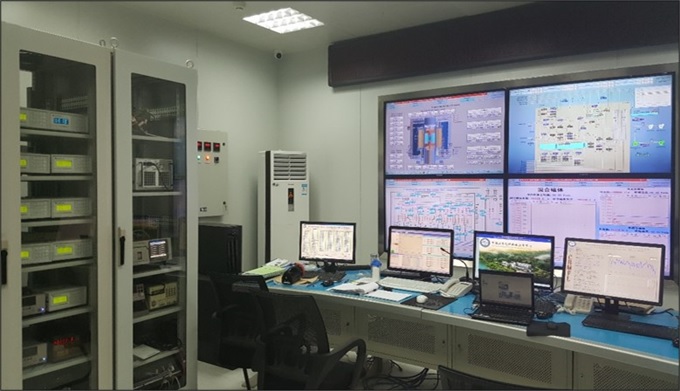High magnetic fields may aid in new discoveries and contribute much to the fundamental knowledge and understanding of matters. The magnet science and technology department has developed series of high field magnets including superconducting magnets, resistive magnets and hybrid magnets, and has broken three world records. In the department, more than fifty experienced engineers and researchers focus on developing the technology to generate the possible highest magnetic fields. The department includes six technical teams separately responsible for superconducting magnets, resistive magnets, DC power source, cooling water, cryogenics and control system.

1. Superconducting/hybrid magnets
The hybrid magnet, which produced 40 T in a 32 mm bore for the first time in 2016, consists of a resistive insert, and a superconducting outsert with a clear bore of 800 mm. The superconducting outsert, containing four separate Nb3Sn CICC coils, can contribute 11 T with 13.4 kA current. The field of the hybrid magnet was increased to 42.9 T in 2017 and then 43.9 T in 2018, with the development of technology of resistive magnets. The hybrid magnet is operated 3-6 months in each year. Besides, a 10 T split superconducting magnet with crossing warm bore of 100 mm has been designed and put into operation for condensed matter physics and material science research. The split magnet contains two Bi-based HTS insert coils and four NbTi coils. The team also contracts with lots of institutions or universities to design one-of-a-kind magnet systems.
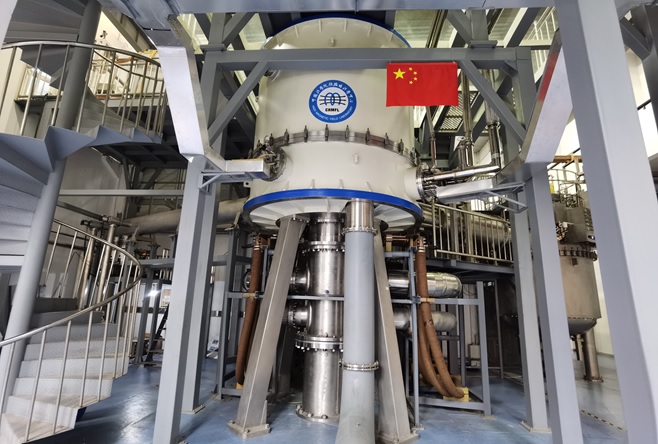
2. Resistive magnets
The resistive magnets, which are characterized by high magnetic field intensity and fast excitation rate, are the main experimental facilities in the laboratory. Up to now, five resistive magnets cooled by pure water with three kinds of bore size are developed and operated. The WM1 with 32 mm bore magnet can produce 38.5 T central field. The WM2 for NMR experiments has high homogeneity within its 50 mm bore. The WM3 for magnet technology developing can generate 20 T in a big bore of 200 mm. The 27.5 T field produced by the WM4 with 10 MW and the 35 T field produced by the WM5 in a 50 mm bore, are still the world records. A new resistive magnet named WM6 is under built, and it is planned to produce 42 T in a 32mm bore at the end of 2022.
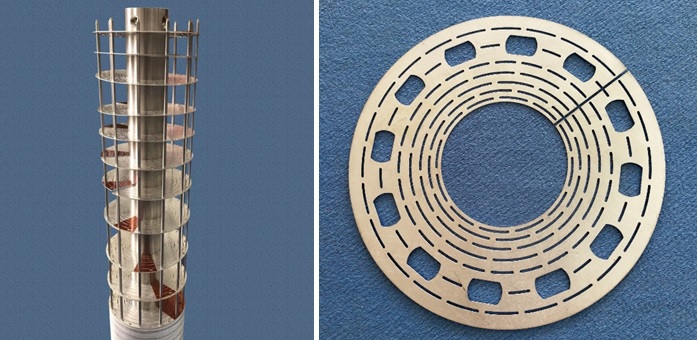
3. DC power source
The 28 MW DC power source, which contains two 14 MW modules in parallel, is designed to be capable of providing electric power to energize the resistive magnets. For the steady-state magnetic fields, what the users most concerned are the field and ripple. Based on the high-precise control and measurement circuits design, stability of the power source is better than 5 ppm. Also based on the high-resolution firing control circuits and passive filters design, it achieves a ripple and noise variation of better than 25 ppm without active filters. The power source is being upgraded to 42 MW to meet the requirements of the WM6. At present, a new type of shunt linear active filter is being designed, which is expected to reduce the current ripple to less than 10 ppm.
The 16 kA DC power source, is designed to charge the superconducting outsert of the hybrid magnet. In parallel to the power source, an energy dump resistor (0.284 ) is configured to remove the stored energy out of the coils after a quenching.
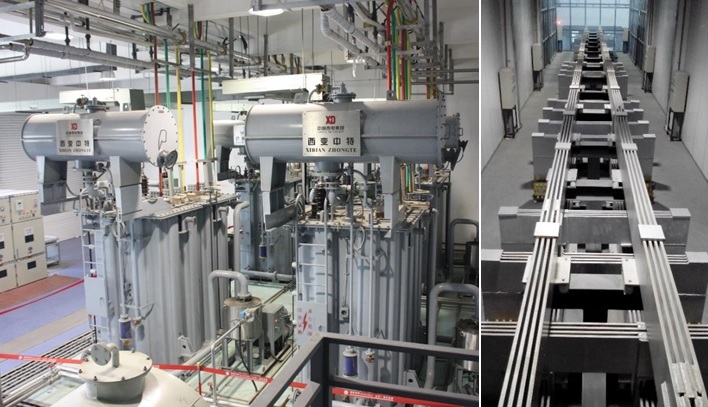
4. Cooling water system
The cooling water system is designed for taking away the heat generated by the high power resistive magnets. The system is comprised of three sub-systems: deionized water circulation system, chilled water system and control system. Deionized water circulation system chiefly produces a resistivity of 18.2 M cm ultrapure water as circulating cooling water, and maintain the resistivity higher than 15 M cm during the magnet experiments. Chilled water system mainly takes away the heat of circulating cooling water through heat exchange with a maximum flow rate 1400 m3/h of chilled water, and assures the temperature of deionized water at magnet inlet no more than 10 . The chilled water storage capacity is nearly 6000 m3, which can maintain 6 hours of the experiment when the magnet runs at 20 MW.
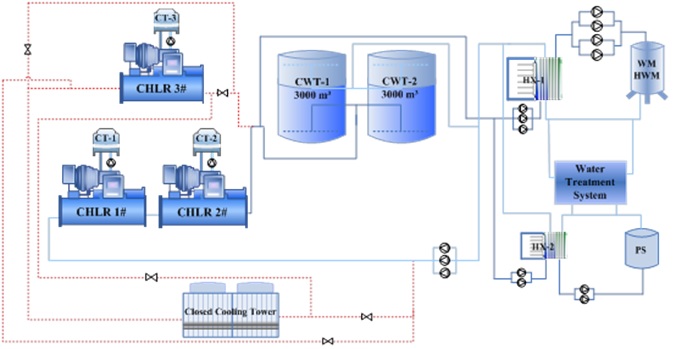
5. Cryogenic system
The cryogenic system, mainly including an LHe plant (360W@4.5K), a cryo-distribution box, a magnet cryostat, and a multichannel transfer line, is designed to supply 4.5K forced-flow supercritical helium to the superconducting outsert of the hybrid magnet. The four superconducting coils are totally divided into 26 cooling-channels which are hydro-dynamically connected in parallel. To guaranty the acceptable level of thermal stress and mechanical safety of the coils, the maximum temperature differences of each coil are controlled to be below 50 K. During protected quenching, the system can response automatically and take 30 minutes to recover, but not enough to make failures or emergency stop. Besides, the cryogenic system needs to supplies more than 50,000 liters LHe each year for the 12 measurement instruments, and 90% of the evaporated helium can be recovered, then purified and re-liquefied.
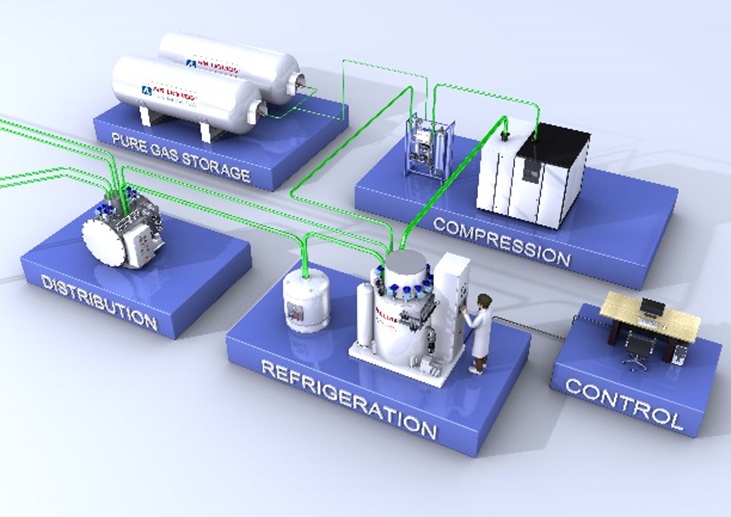
6. Central control system
The central control system, consisting of a water-cooled magnet control subsystem and a safety protection subsystem, dedicated to ensure the high-field magnets of SHMFF working safe and stable. The system’s major functions are operation state detection, coordinated control, safety interlock, data communication and data management. By constructing the communication channels with a water-cooled power source system, superconducting power source system, deionized-water cooling system, cryogenic system and vacuum system, the central control system implemented the coordinated control to boot the magnet and keep the magnet running safely. There are three main features of the SHMFF central control system: 1) The system has high scalability and robustness. A distributed system architecture was constructed to achieve the function hierarchical isolation and efficient data communication. Besides, a dual redundancy structure was designed and realized, which effectively improves the availability of the system. 2) The system had been effectively monitoring a group of key parameters, including magnet’s electric current, water flow, outlet/inlet water temperature, outlet/inlet water pressure, coil resistance, equivalent coil temperature, etc. 3) The calibration method and mathematical model of water-cooled magnet’s coil resistance were designed and implemented, which solved the core problem in the safety protection of water-cooled magnets.
